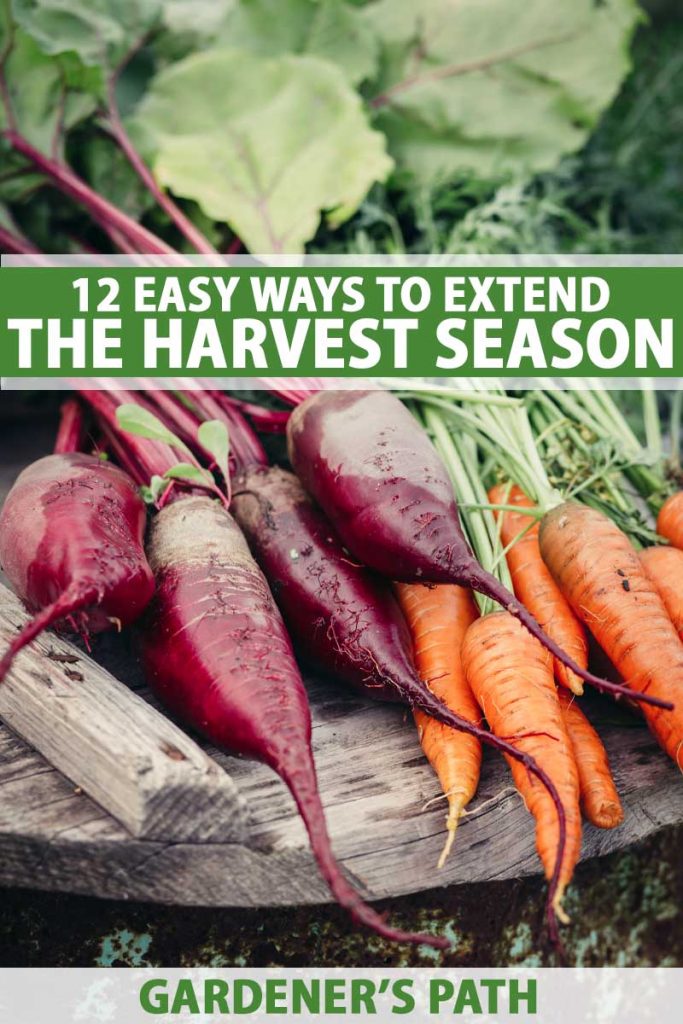Not ready to put your garden to bed just yet?
Luckily, gardening doesn’t have to end when summer does. There are plenty of ways to extend your harvest season so you can keep eating those garden-fresh veggies all through the fall!
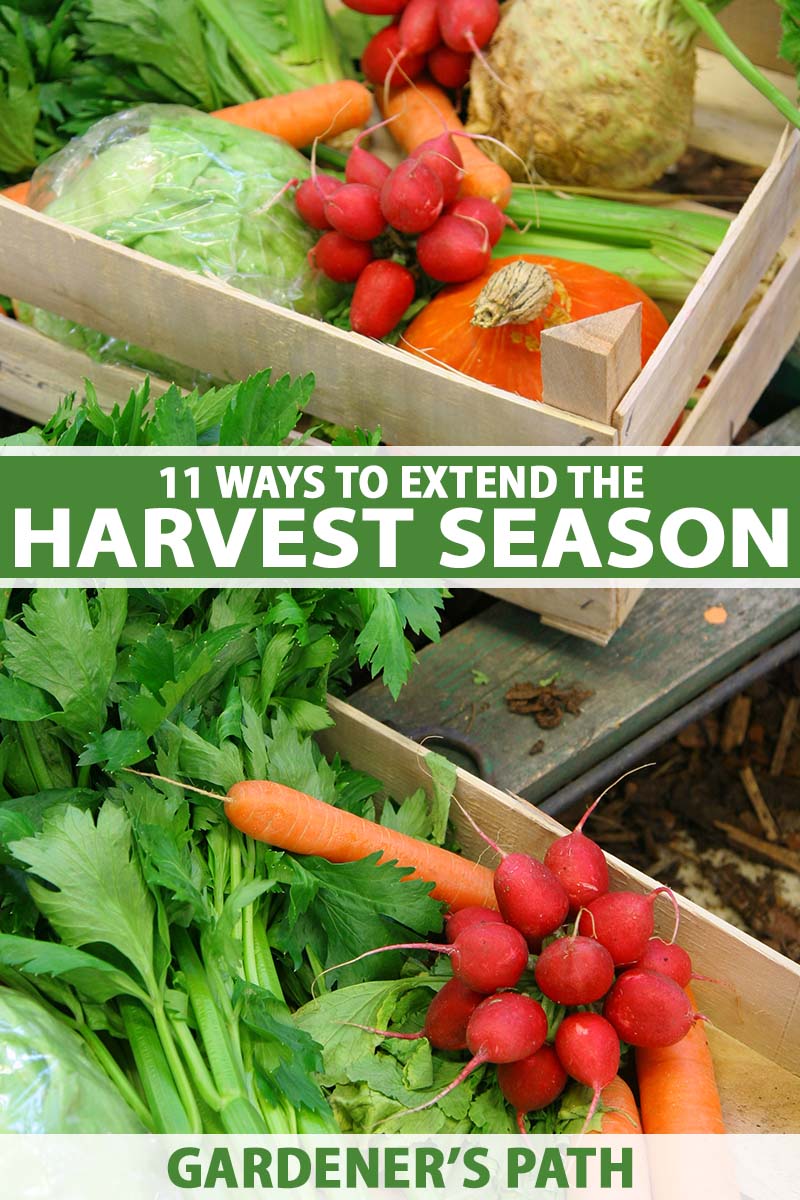
We link to vendors to help you find relevant products. If you buy from one of our links, we may earn a commission.
Try some of the following ideas to keep your garden producing for longer:
11 Easy Ways to Extend the Harvest Season
1. Cold Frames
Cold frames are basically tiny greenhouses that can be mobile or stationary. The general design is a low to the ground wooden base with a transparent top that can be opened and closed.
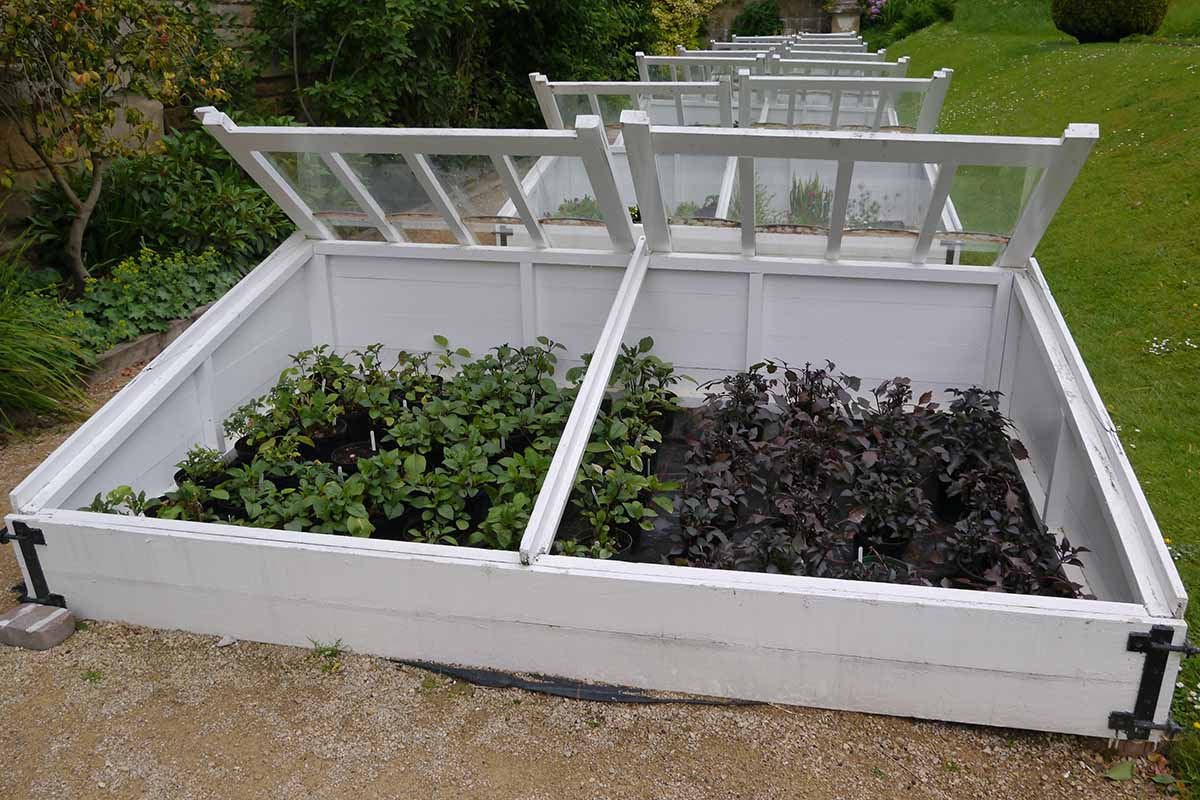
They are simple to make yourself out of glass or plastic and can fit easily over garden beds.
Tip: Discarded old windows are a wonderful, budget-friendly resource for making cold frames!
As the weather starts looking frosty, don’t panic, just place a cold frame over your garden beds to trap heat from the sun, prevent the soil from freezing, and keep plants thriving longer.
Find more info on autumn gardening with cold frames here.
Cold frames are also useful in early spring to protect your plants from late cold snaps.
2. Hoop Houses
Have too many crops to fit under a cold frame? Hoop houses are ideal because they are larger and more practical for bigger gardens, but are also relatively mobile, easy to build, and can be installed on a budget.
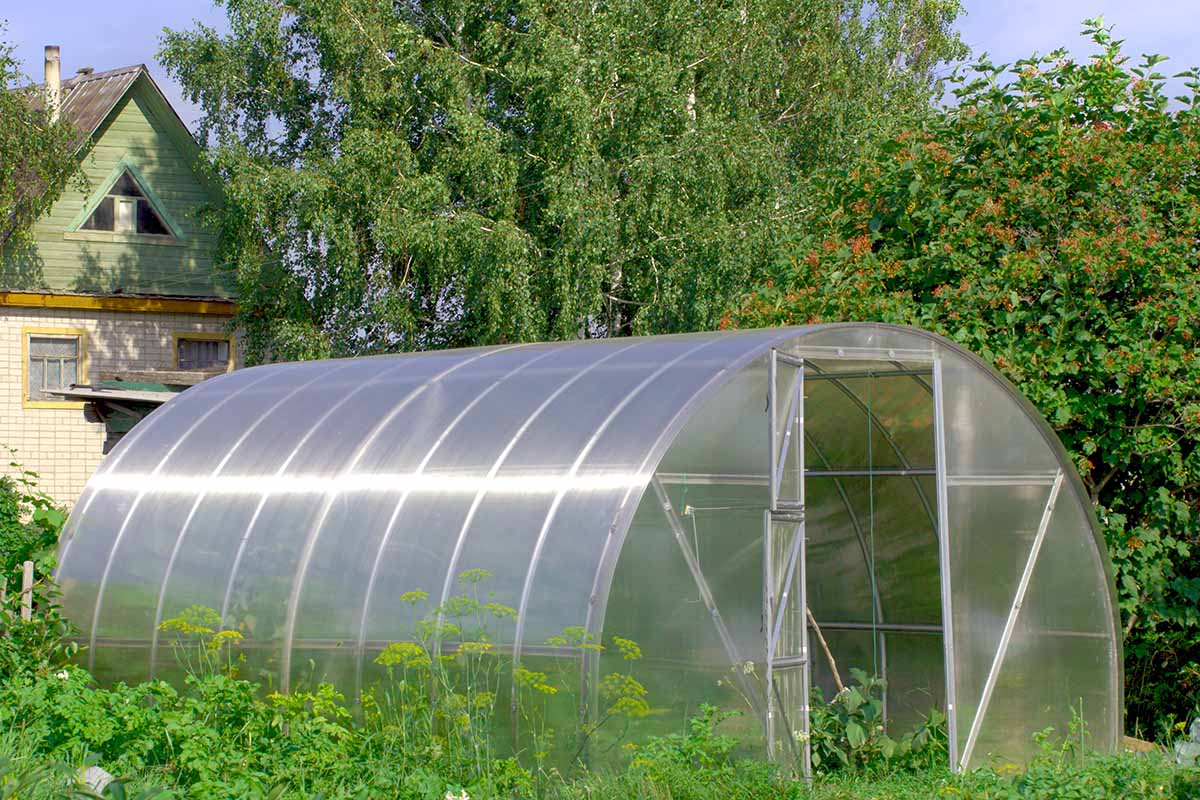
Also referred to as high tunnels, hoop houses are made from a series of plastic, metal, or wooden hoops covered in a tight layer of greenhouse plastic. Like cold frames, hoop houses trap heat from the sun to protect plants and keep the soil warm.
Many designs allow for the plastic to roll up in warmer months so plants can grow under the hoop houses all through the growing season. With proper ventilation, many gardeners keep plants in hoop houses all year long!
3. Greenhouses
Want a more permanent structure? Greenhouses can be heated or unheated, large or small, purchased or DIY.
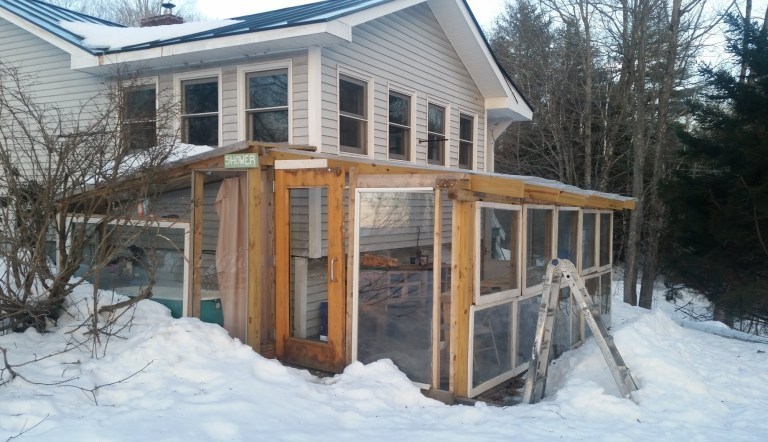
At my home in Vermont, I built a DIY lean-to style greenhouse attached to the back of my house (photo above), made mainly from repurposed windows and doors.
This is another DIY greenhouse (shown below), a standalone example also made with recycled windows. The builder also made use of free pallet racks gleaned from Craigslist for the frame.
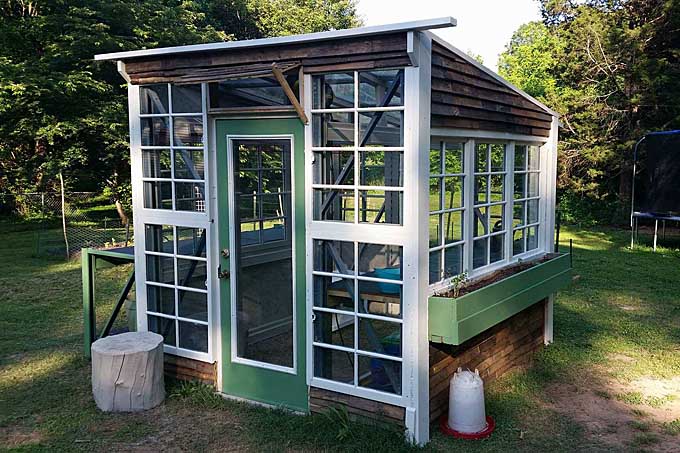
Heated greenhouses can enable gardeners to grow many crops right through the winter, but even unheated greenhouses can be used to start plants in early spring and shield plants from cold in the fall.
Depending on the size and design of your greenhouse, you may even be able to plant right in the ground inside them.
If you do want heat but don’t want a propane bill, there are plenty of creative ways to generate warmth in a greenhouse like installing radiant floor heating, utilizing a passive solar design, or even placing large drums of water along the back wall.
Get the 101 on greenhouses in our beginner’s guide.
4. Row Covers
Using floating row covers is perhaps the simplest way to cover plants. Row covers are simply garden fabric that is draped and secured over plants as a protective covering.
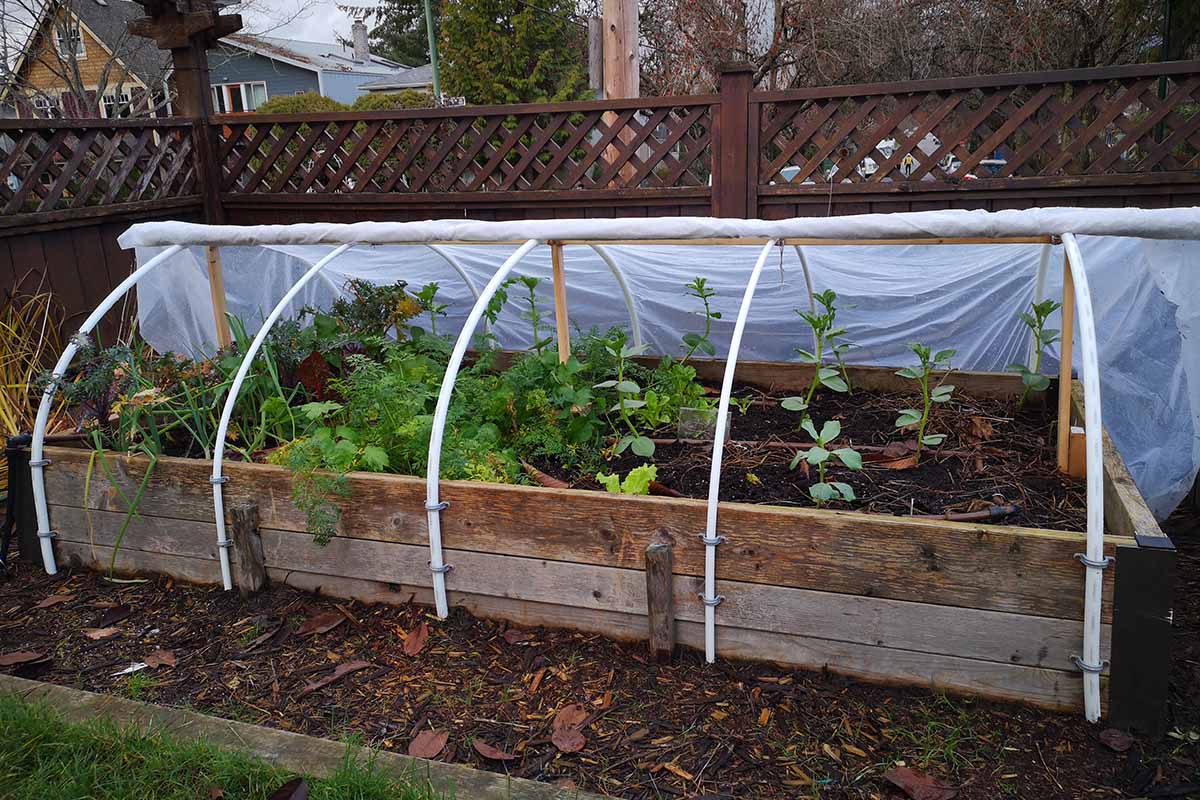
Fabric is sometimes draped directly over plants or it may be secured around a series of hoops, essentially functioning as a mini hoop house.
Row covers are extremely easy to use and can be a fairly cheap solution to extend the season.
In addition to protecting plants from cold, row covers can also be used to protect cool-season crops from heat and to provide protection from pests.
Garden fabric is porous and generally made from polyester or polypropylene. So unlike cold frames or plastic hoop houses, row covers also allow for rain to pass through to plants.
Learn more about row covers in our guide.
5. Choosing Appropriate Fall Crops
When considering crops to extend your garden season into the fall, what you plant matters. Some species do much better than others when grown in cooler temperatures.
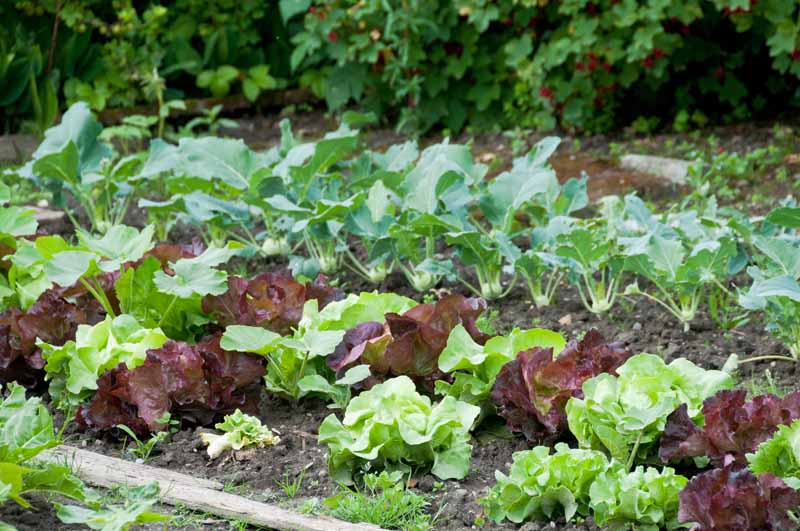
Slow-growing, heat-loving crops like tomatoes and peppers do better in the summer heat and will likely not last long once temperatures become frosty.
In general, crops that are typically planted for an early harvest in spring tend to also do well planted in midsummer for a fall harvest.
For ideas on what to plant, check out our roundup of 19 cool-weather crops for a productive fall garden.
And to calculate exactly when to sow your seeds, see our guide on when to plant crops in fall.
6. Succession Planting
Succession planting simply means staggering plantings of crops, either by utilizing the same space to grow different types of crops one after the other, or by repeatedly sowing more of the same crop at certain intervals throughout the season.
For instance, planting lettuce every few weeks throughout the summer and into fall will ensure a continuous supply throughout the season.
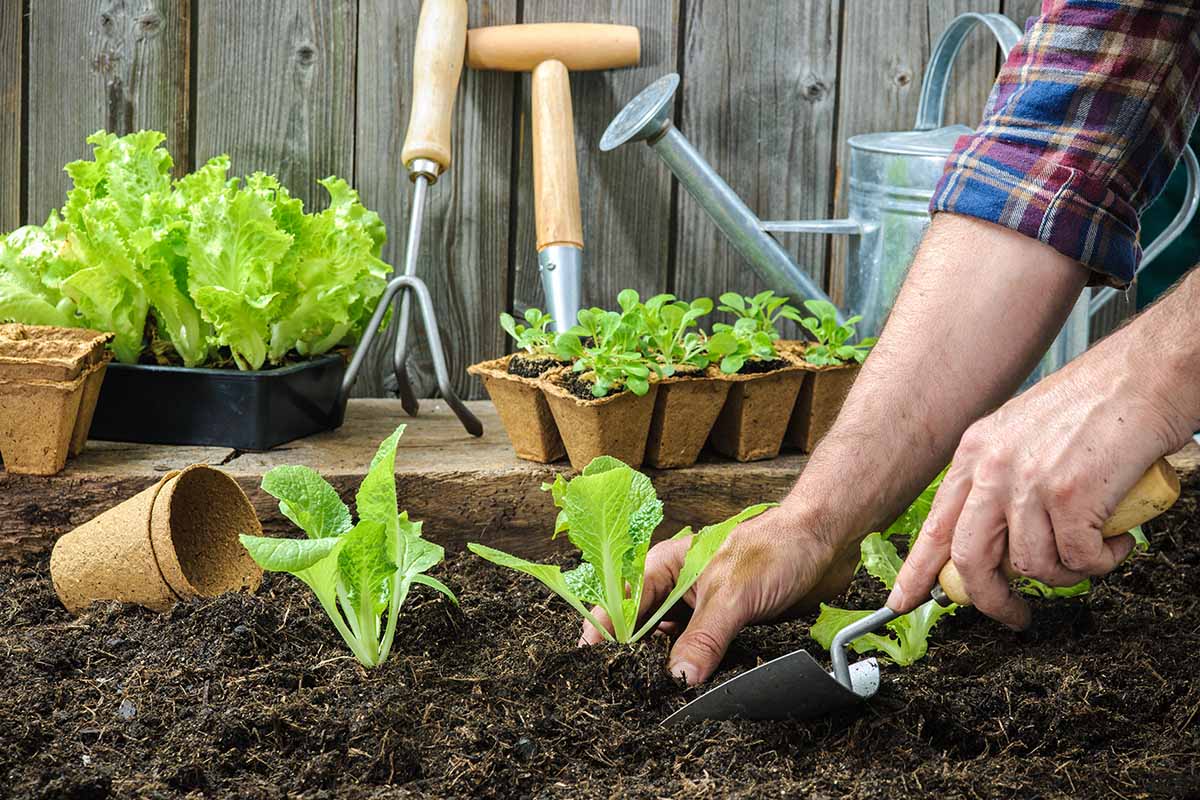
It is also a great idea to plant multiple varieties of the same crop that mature at different times.
By maximizing space and time, succession planting will help you maintain a continuous supply of garden goodies.
Cold-tolerant and quick-maturing crops work particularly well as repeat plantings. Kale, arugula, broccoli, peas, carrots, beets, and radishes are all top choices.
Keep in mind, however, that crop rotation is also important for the health of your garden.
Even if you plant crops in succession in autumn, remember to choose edible annuals from different plant families to sow in that location the following spring, to reduce pest and disease pressure and replenish the soil.
Rotating crops is simply moving crops and related family members to different locations in the garden each season.
There are many benefits to crop rotation, including a reduced risk of pest and disease. Crop rotation also results in more balanced soil, as different crops have different nutrient needs. Plants in turn are able to grow more vigorously and produce longer.
Read more about succession planting here.
7. Mulching
Mulching has many benefits for the garden. It keeps weeds down, improves soil texture and increases nutrient content, helps to retain moisture, and prevents erosion.
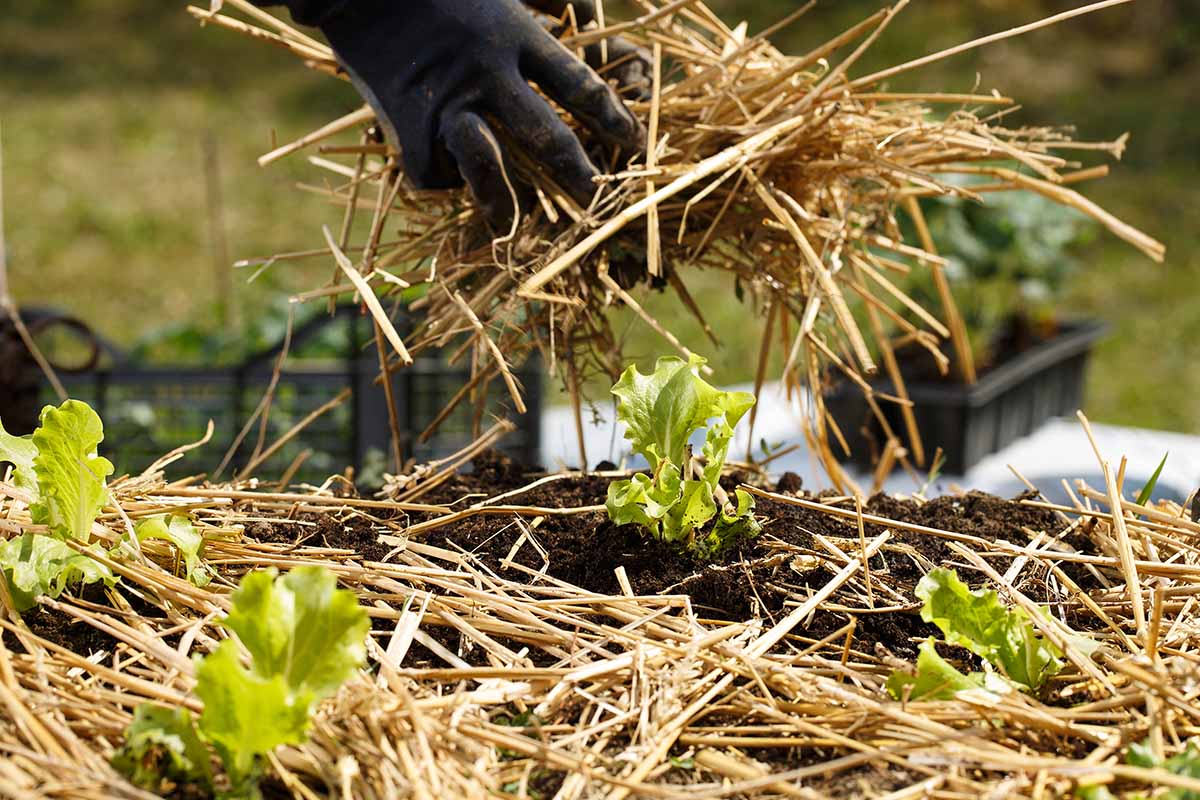
It is also especially beneficial for keeping soil warm and protecting plants in cold temperatures. By adding a thick layer of straw, hay, or other organic mulch material, soil temperatures can remain warmer for much longer.
When properly protected under a thick two-foot layer of mulch, some cold-tolerant crops can even be left in the ground and harvested throughout the winter.
Learn more about mulching for cold weather protection in our guide.
8. Microclimate Observation
It is important to be aware of your USDA Hardiness Zone, which can help you determine what crops can be planted in your climate and when. But it can also be useful to get even more specific.
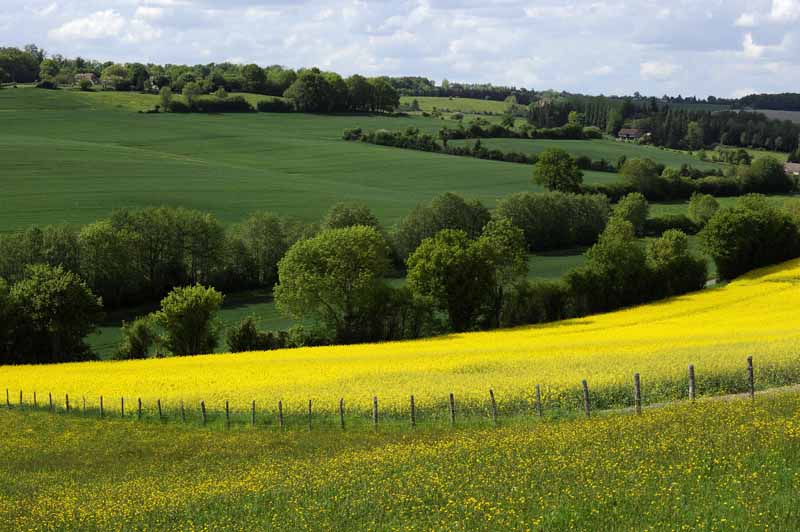
The term “microclimate” refers to the climate of a very small or specific location that may differ slightly from locations that surround it.
Whereas each USDA Hardiness Zone covers a broad area, even when these are further broken down in A and B groups, differences in elevation, coastal conditions, heat retention, and other factors that play a role in gardening may vary within that space.
This may play a role at an even more localized level as well.
From one yard to the next, you may have more protective or heat-retentive structures than your neighbors, heavy cover that creates shade or hedges that provide a windbreak, and so on.
For instance, one side of my house receives more sun than the other and is protected from wind by a line of trees. This microclimate may not experience frost or freeze as quickly as a more shaded or open area of my yard.
By observing microclimates in our own neighborhoods and yards over time, and perhaps taking detailed notes year after year, it becomes much easier to adapt garden layouts to maximize potential use of space and can even open up possibilities that may have seemed impossible before.
You may be surprised to find a crop that was unable to withstand the the temperature and moisture changes in a certain area of your backyard in previous years may thrive and continue producing for much longer in a different location only a few feet away.
9. Raised Beds
Raised beds are mounds of soil that sit above ground level, often contained within a frame made of wood, rocks, cinder blocks, or other material.
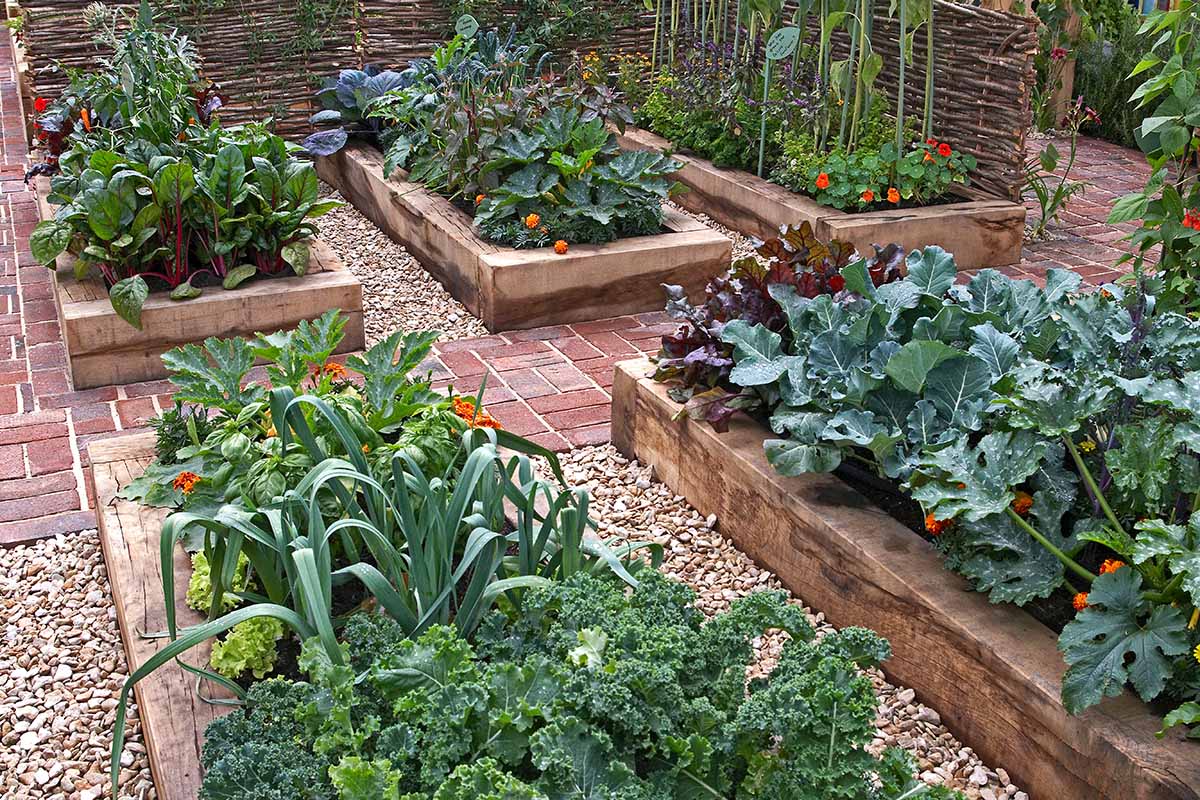
Since the soil contained in raised beds is elevated, it dries quicker and warms faster than the soil at ground level. Because they warm up earlier in the spring and stay warmer later into the fall, raised beds can be useful for extending the harvest season.
Another benefit of planting in raised beds is that they are easy to cover with cold frames or row covers, which can extend the season even further.
As an added bonus, since soil in raised beds doesn’t get compacted as easily as in-ground soil, it doesn’t need to be turned or tilled often.
Note, however, that raised beds that are constructed on stilts rather than being flush with the ground may actually cool down faster than the surrounding soil.
Learn how to make your own raised beds here.
10. Inter-Planting
The harvest season can be cleverly extended by planting fast-growing crops in between slow-growing ones.
Once the slow growers are big enough to start to spread out, the fast growers are already done. Inter-planting, also known as intercropping, maximizes garden space so you can get more bang for your buck!
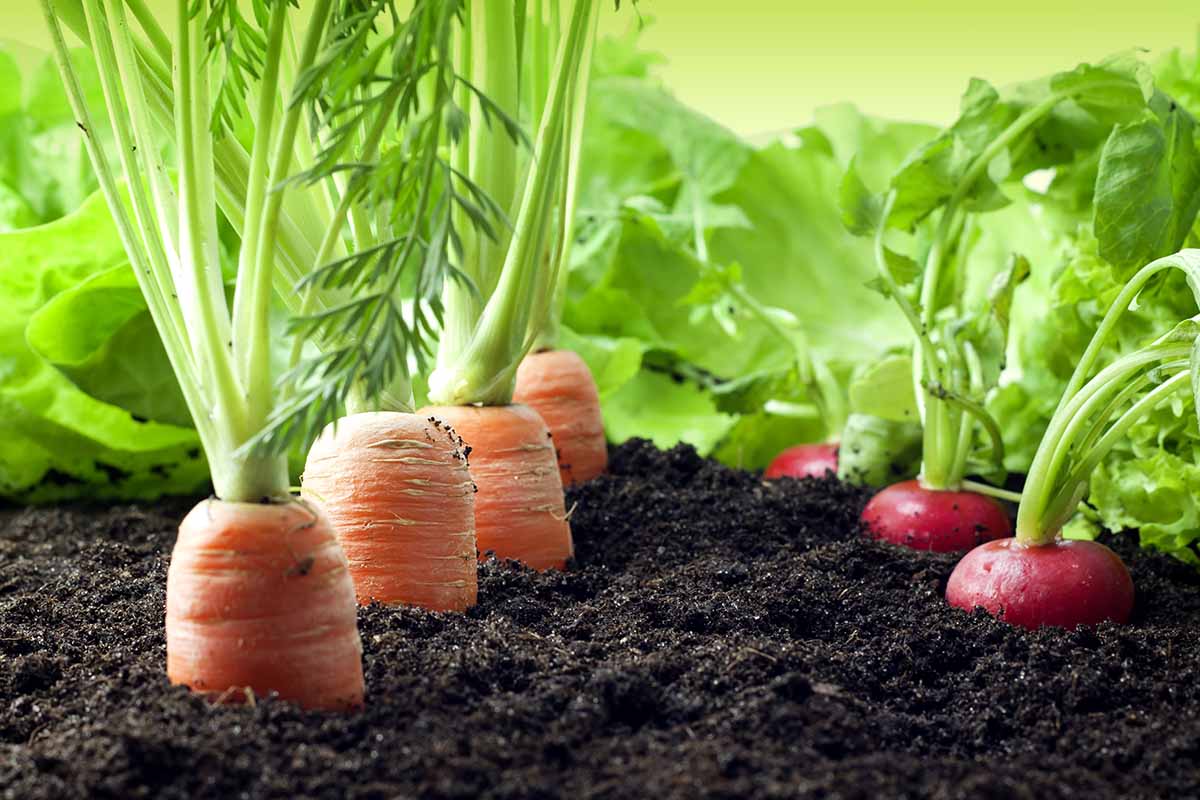
When planting a fall crop of carrots, for example, try inter-planting radishes between them. The radishes will be ready to harvest just as the carrots are starting to take up more space.
11. Windowsill Gardening
Finally, why not dig up some of those frost-hating friends, pot them up, and place them on your south-facing windowsill?
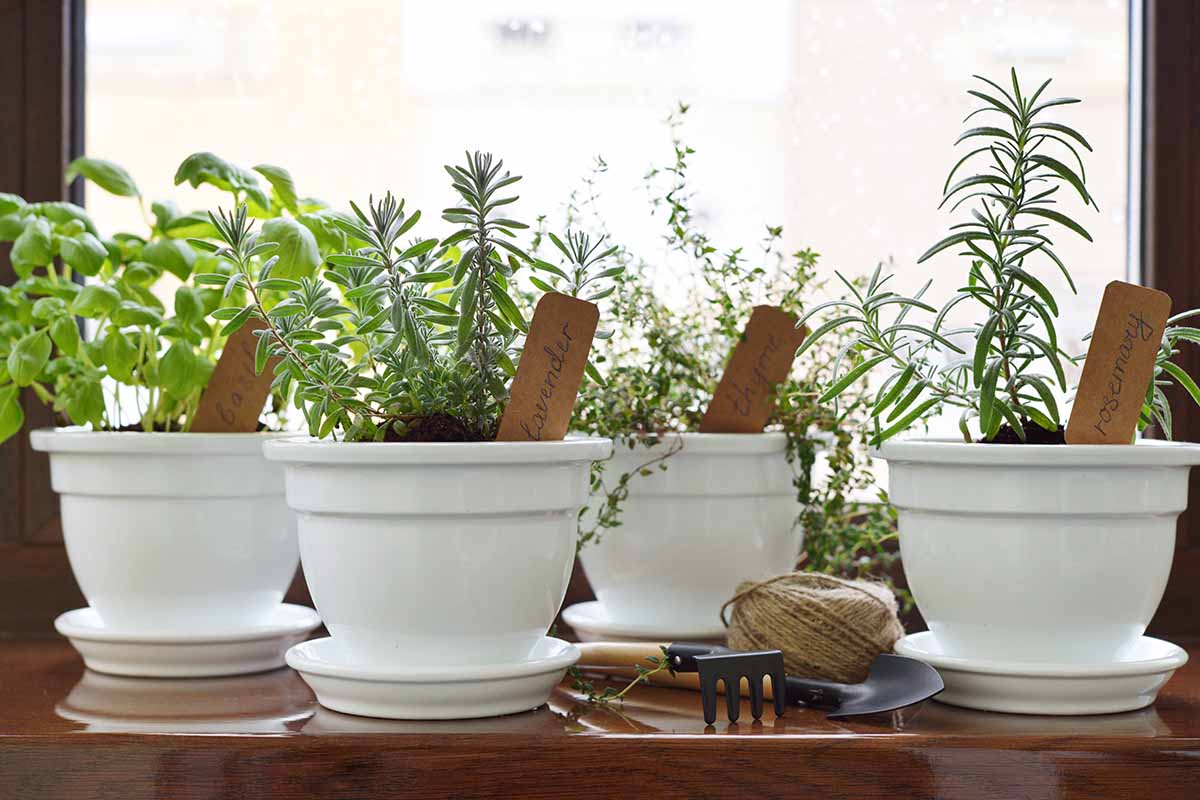
Not only can you extend the life of many herbs and plants this way, you also have the benefit of adding a glint of green indoors to all that winter white outside.
After all, who doesn’t love coming home to a living room filled with plants at the end of a dreary winter day?
Many culinary herbs and crops grow well inside, and some can continue producing through the winter if proper care is taken.
In cases where plants such as eggplant, peppers, and tomatoes may be grown as perennials in warmer regions, gardeners in cold climates can often keep these alive throughout the winter to be replanted outside again in spring.
Choose plants that don’t require humid conditions, avoid drafty locations, and plan to supplement with a grow light to meet their needs.
Leafy greens, root veggies, and culinary herbs such as sage, mint, parsley, and chives are all excellent candidates for a windowsill garden.
Enjoy a Long and Fruitful Harvest
As you can see, there are many options available to extend the harvest season.
Choose the ones that will work best for you – if building a greenhouse seems daunting or is too large for your space, then try some simple row covers or find a local source of straw mulch.
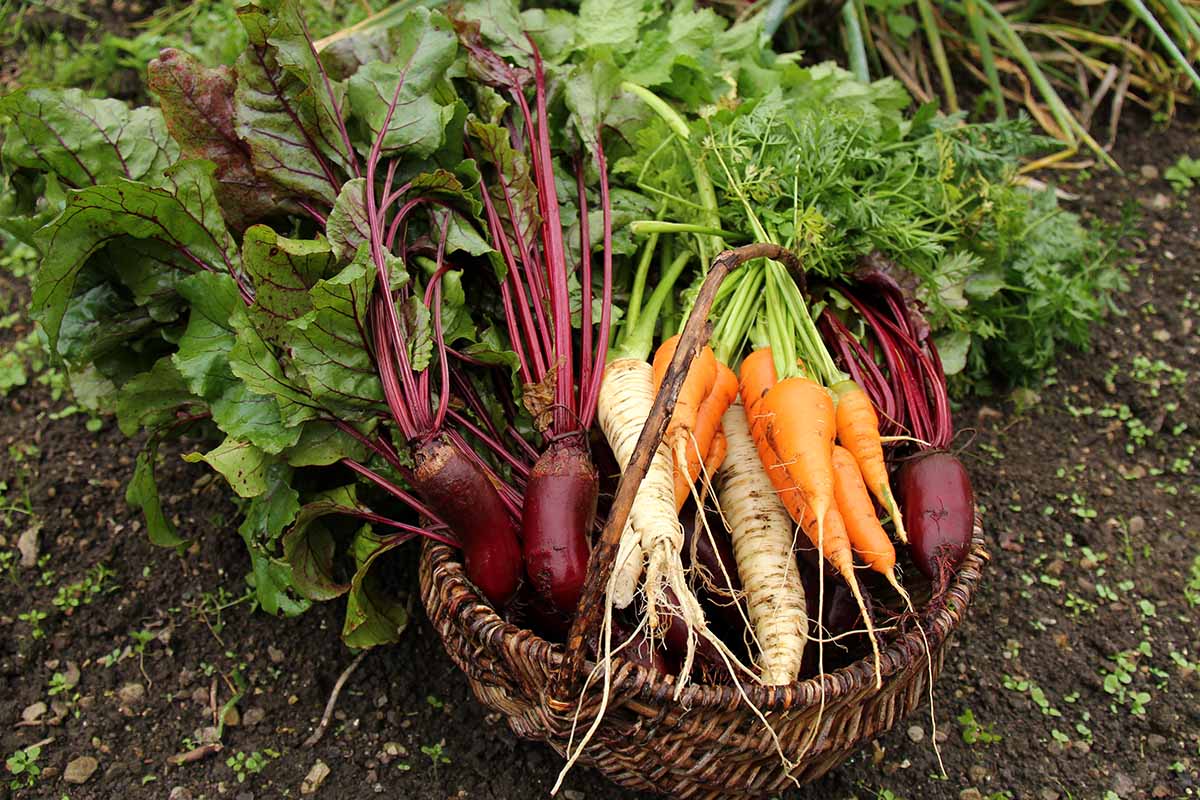
You can easily combine methods or experiment with several with different crops. And don’t be surprised if your fall garden soon becomes the talk of the neighborhood!
What tricks have you learned to extend the harvest season? Share your experience in the comments section below.
And for more vegetable gardening know-how, check out these guides next:
